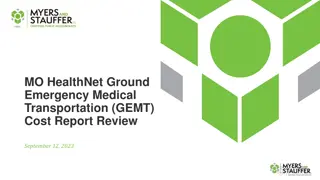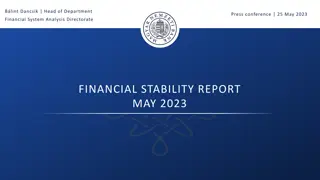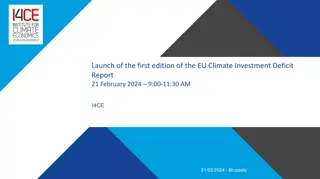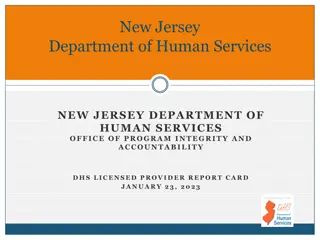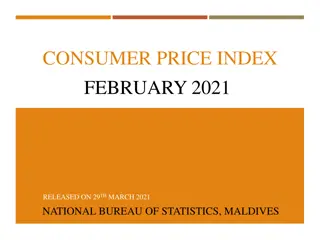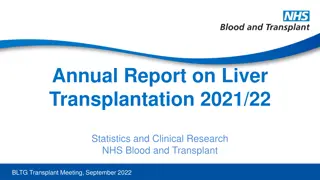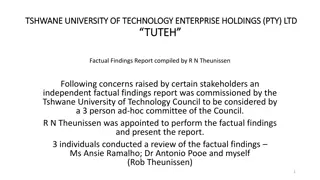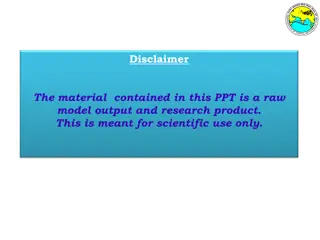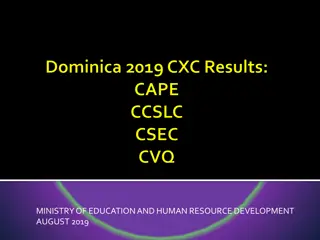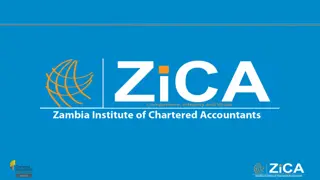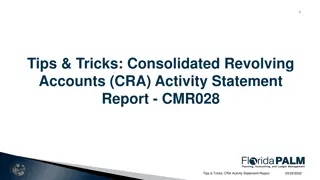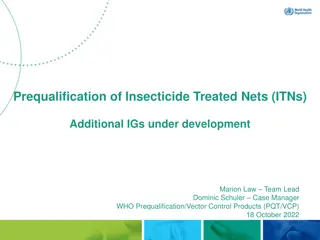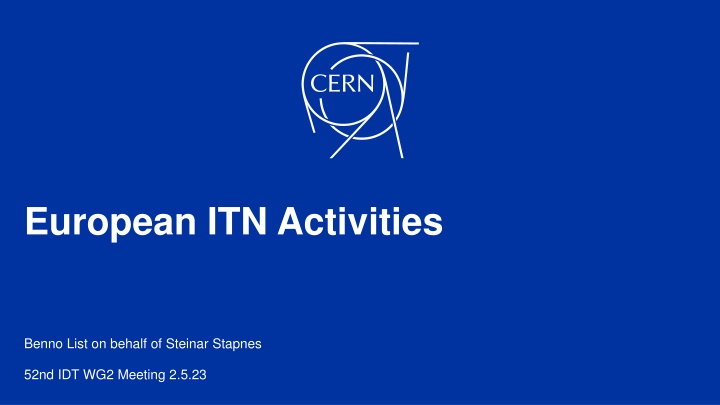
European ITN Activities for IDT - European Representation and Collaboration
European ITN activities within the International Detector Technology (IDT) framework focus on European representation, collaboration, and contribution to various workgroups, ensuring alignment with lab and university capabilities. CERN and KEK play essential roles in coordinating European participation and resource allocation, with plans for establishing a European project office for effective follow-up. European involvement spans across multiple areas, including personnel, infrastructure, sources, and damping rings.
Download Presentation

Please find below an Image/Link to download the presentation.
The content on the website is provided AS IS for your information and personal use only. It may not be sold, licensed, or shared on other websites without obtaining consent from the author. If you encounter any issues during the download, it is possible that the publisher has removed the file from their server.
You are allowed to download the files provided on this website for personal or commercial use, subject to the condition that they are used lawfully. All files are the property of their respective owners.
The content on the website is provided AS IS for your information and personal use only. It may not be sold, licensed, or shared on other websites without obtaining consent from the author.
E N D
Presentation Transcript
European ITN Activities Benno List on behalf of Steinar Stapnes 52nd IDT WG2 Meeting 2.5.23
Focus on Europe Within IDT, 2020 -> today: Established European Representation and contribution to all WGs making sure lab and university capabilities and interests were reflected in the planning. CERN-KEK ICA appendix covering CERNs role in the IDT, also its role in European coordination, communication and planning. This is organized as part of the Linear Collider Study at CERN, as also described in the recent MTPs. The initial plan for the ILC preparation phase activities ( Pre-lab ), and the priorities currently emphasised in the ITN, have been worked out by the IDT-WG2. The WG2 group has important European involvement in the ITN planning. European Preparation for the ITN (2023 ->): A model for European participation discussed in a series of ILC Europe meetings (covering all aspects of European ILC activities) see the following slides. The model has also been discussed with KEK and in the ILC IDT. In parallel discussions took place between CERN (Fabiola Gianotti), KEK (Masanori Yamauchi), Mike Lamont (CERN- ATS), Tatsuya Nakada (IDT chair) and myself on a resource contribution to Europe by KEK, how to implement it and to start the European activities. Information about the ITN status sent by e-mails to the laboratory managements most concerned mid 2022, and presented to the full LDG in November 2022 Reminder: ITN is not only relevant for ILC, it is also relevant for our R&D planning and technology expertise and interests of many European labs and industries (and also other projects related to the technologies pursued). S. Stapnes 5.4.23 https://agenda.linearcollider.org/event/9960/ 2
European Organisation of the ITN programme CERN plays coordinating and facilitating role KEK contributes to the material costs Main contract for flow of funds between CERN and KEK* CERN-KEK ILC IDT agreement already extended by 2 years New agreement being prepared for ITN, describing the European programme, allowing funds to be transferred Subsequent contracts* similar to what is done for other studies for future colliders between CERN and European Labs in the cases where money flow is needed (limited number) Establish a light distributed Project Office, administratively anchored to CERN, to follow up the work. Aim to involve CERN personnel, fellows, PJAS within the current LC resource planning at CERN (in many cases using long term collaborative links and common studies between CLIC and ILC). This is possible without perturbing the overall LC study resource allocation. KEK CERN Lab/Univ/FA 1 Lab/Univ/FA n *Additional collaboration agreements between KEK and FA/countries might be very beneficially, where these activities are recognised directly 3
The European activities, and resources European presentation of ILC studies, distributed on five main activity areas (see more details in slides below): Personnel with interest and skills in European labs/Univ., local infrastructure A1 with three SC RF related tasks SRF: Cavities, Module, Crab-cavities A2 Sources Concentrate on undulator positron scheme, consult on conventual one (as used by CLIC and FCC-ee) Material funds as estimated (major/core part from KEK), in some cases complemented by local funding CERN LC, project office (within existing LC resources at CERN) A3 Damping Ring including kickers Low Emittance Ring community (many studies in CLIC and FCC-ee) A4 ATF activities for final focus and nanobeams Many European groups active in ATF EAJADE, MC exchange project supporting Higgs factory personnel exchange to Japan and the US A5 Implementation including Project Office Dump, CE, Cryo, Sustainability, MDI, others (many of these are continuations of on-going collaborative activities) EAJADE: Information at LINK 4
Resource estimate (core) for Europe Top-down estimate of technical personnel purely for ITN deliverables ~30 FTY-years Estimated material funds 4 MCHF over 4 years Materials ~4 MCHF Technical personnel ~30 FTEy SCRF Sources DR ATF Implementation SCRF Sources DR ATF Implementation This rests of basis of technical expertise, infrastructure and technology in the European labs/Universities/Industries which are not included in this resource overview, plus the scientific community, including students, involved in ILC related studies . 5
Concluding words and next steps Initial planning in Europe for ITN well underway Agreement draft CERN - KEK mid April Contribution to the material cost from KEK starting ~mid 2023 Converge on European planning such that draft research contracts CERN and European partners can be drawn up on this timescale (initially for SCRF cavities and pulsed magnet) LC planning at CERN in agreement (requires some adjustments 2023-25), helped by EAJADE (EU funds). The programme is very well aligned with European accelerator R&D priorities (for Higgs-factories and LDG roadmap), and builds on existing expertise, industrial capabilities and infrastructure and a long history of technology developments for SC linacs and ILC in Europe SC cavities (word-wide) are predominantly produced by European industry (RI and Zanon) Important extension of accelerator R&D collaboration between Japan and Europe (and similarly Japan US) Concerning the LDG accelerator roadmap, the primary but not only link is to RF. The work also has R&D elements related to plasma, energy recovery, magnets and muons. 6
Current Activities Weekly ZOOM Meeting of participating groups Will build up across activities initially focus on cavities and pulses magnet (e+) where orders are imminent: INFN & CEA: Prepare procurement of single cell (later: 9 cell) cavities Produce from fine grain (FG) and medium grain (MG) material Involve multiple vendors Univ. Hamburg: Prepare engineering design of flux concentrator prototype E. Cenni 27.4.23 Presenter | Presentation Title 4 April 2025 7


